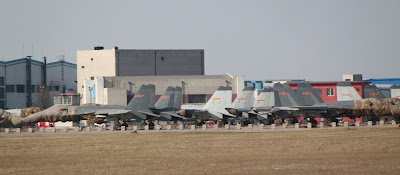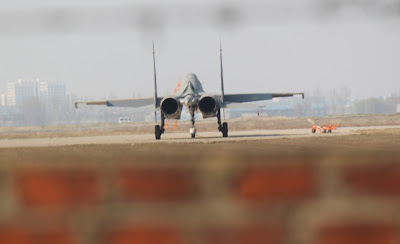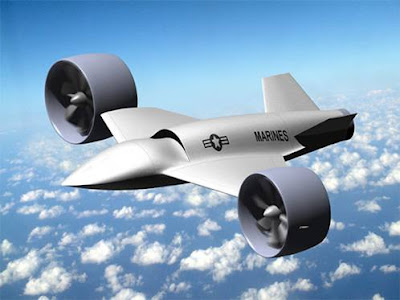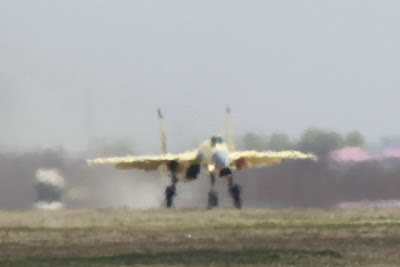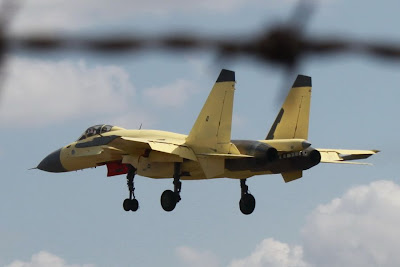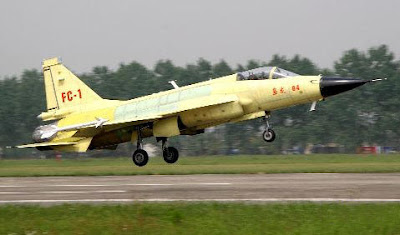Military Power of Bangladesh Bangladesh Army Bangladesh Navy Bangladesh Air Force
Pakistan successfully Tests Fires Short Range Ballistic Missile Nasr (Hatf IX )
Pakistan Successfully conducted the 1st flight test of the newly developed Short Range Surface to Surface Multi Tube Ballistic Missile Hatf IX (NASR). The missile has been developed to add deterrence value to Pakistan’s Strategic Weapons Development programme at shorter ranges. NASR, with a range of 60 km, carries nuclear warheads of appropriate yield with high accuracy, shoot and scoot attributes. This quick response system addresses the need to deter evolving threats.
The test was witnessed by Director General Strategic Plans Division, Lieutenant General (Retired) Khalid Ahmed Kidwai, Chairman NESCOM Mr Irfan Burney, senior officers from the strategic forces, scientists and engineers of strategic organizations.
On this occasion, the Director General Strategic Plans Division, Lieutenant General (Retired) Khalid Ahmed Kidwai said that the test was a very important milestone in consolidating Pakistan’s strategic deterrence capability at all levels of the threat spectrum. He said in that hierarchy of military operations, the NASR Weapon System now provides Pakistan with short range missile capability in addition to the already available medium and long range ballistic missiles and cruise missiles in its inventory.
The successful test has also been warmly appreciated by the President and Prime Minister of Pakistan, who have congratulated the scientists and engineers on their outstanding success.
IAF To Deploy Su-30MKI Fighter Aircraft Along Pak Border
 The Indian Air Force will deploy two squadrons of its frontline air superiority Su-30MKI fighter here.
The Indian Air Force will deploy two squadrons of its frontline air superiority Su-30MKI fighter here."We have decided to deploy two squadrons of Su-30MKI fighter squadrons in Jodhpur in next two years," South Western Air Command chief Air Marshal A K Gogoi told reporters here.
Gogoi is on a three-day visit to the air force bases in and around Jodhpur.
Jodhpur will be the first Su-30MKI base along the Pakistan border. Till now, the IAF has deployed its main strike fighter in Lohegaon near Pune, Bareilly, and Tezpur and Chabua in Assam.
IAF also plans to deploy the aircraft at its Halwara air base in Punjab.
IAF has started operating Su-30s in high-altitude areas too and its squadrons on a regular basis practice flights from the Leh air base in Jammu and Kashmir.
Talking about strengthening air surveillance capabilities, Gogoi said medium power radars have been deployed under the command, which will be the first one to use them.
NEW Chinese Vertical/Short TakeOff And Landing Fighter J-18
Another rumor circulated on the Internet recently involving the alleged J-18, China's first warplane with vertical/short takeoff and landing capabilities.
Earlier this month, citing a report by Japan's Asahi Shimbun newspaper, Phoenix Television said the J-18 had completed a test flight at a field base in the Inner Mongolia Autonomous Region.
The report said the wings of the jet, similar to Russia's Su-33, a carrier-based multi-role fighter, could be folded, and suspected that it would be installed on China's future aircraft carrier.
The report came at the same time as foreign media speculated that China's first aircraft carrier, a modification of the Varyag bought from Ukraine, would take to the oceans in July. The Chinese military has denied such reports.
Ding Zhiyong, a spokesperson at the AVIC, told the Global Times on Monday that the Japanese report of the alleged J-18 was pure speculation and that the corporation had no information to reveal.
Li Daguang, a professor specializing in military strategy at the National Defense University, told the Global Times earlier that even if the rumored carrier were true, the vessel would only be used for training.
Earlier this month, citing a report by Japan's Asahi Shimbun newspaper, Phoenix Television said the J-18 had completed a test flight at a field base in the Inner Mongolia Autonomous Region.
The report said the wings of the jet, similar to Russia's Su-33, a carrier-based multi-role fighter, could be folded, and suspected that it would be installed on China's future aircraft carrier.
The report came at the same time as foreign media speculated that China's first aircraft carrier, a modification of the Varyag bought from Ukraine, would take to the oceans in July. The Chinese military has denied such reports.
Ding Zhiyong, a spokesperson at the AVIC, told the Global Times on Monday that the Japanese report of the alleged J-18 was pure speculation and that the corporation had no information to reveal.
Li Daguang, a professor specializing in military strategy at the National Defense University, told the Global Times earlier that even if the rumored carrier were true, the vessel would only be used for training.
IAF Losing Edge Over PAF
 The Pakistan Air Force is stronger than ever. Since the last Indo-Pak air war of 1971, the Pakistan Air Force has with steely determination built up numbers, lethal capabilities and a combat force now counted as one of the most disciplined and well-trained air forces in the world.
The Pakistan Air Force is stronger than ever. Since the last Indo-Pak air war of 1971, the Pakistan Air Force has with steely determination built up numbers, lethal capabilities and a combat force now counted as one of the most disciplined and well-trained air forces in the world.Today has a disturbing proof that all this has made India worried. A recent presentation by the defence intelligence establishment paints a morbid picture of how the numbers and capability advantage that the Indian Air Force has always found comfort in is rapidly slipping away.
Headlines Today has accessed the recent presentation made to the Ministry of Defence. The document makes singularly ominous projections. The most glaring warning is about combat force ratio.
The presentation says that the ratio of 1:1.7 is likely to progressively dip to 1:1.2 by the end of 2012. It describes this as a "historic low". It also says that the traditional hi-tech advantage is almost equal now with 9.5:11 squadron ratio.
With Pakistan rapidly acquiring early warning aircraft, mid-air refuellers and long-range missiles, the technology gap is at a historic low.
It is a wake-up call to India's military planners. The decisions taken now could forever doom the crucial advantage that the Indian Air Force has always enjoyed against an adversary that can never be underestimated.
A formidable adversary
The last time the air forces of India and Pakistan fought a full-blown war was forty years ago.
But if the Pakistan Air Force of 1971 was an enemy to be reckoned with, circumstances have made it an even more formidable adversary today.
The internal assessment by the Indian defence establishment makes some grimly practical projections in the light of an adversary emboldened by an unfettered modernisation spree.
The government has been warned that with the Indian Air Force's edge slipping fast, the Pakistan Air Force's assertiveness is likely to increase.
Once seen as a primarily defensive force, the Pakistan Air Force will use its new strength to employ offensive and defensive operations in equal measure.
With new precision weapons, the Pakistan Air Force will conduct limited strikes to achieve strategic effects.
The one thing that won't change -- high-value targets in J&K will be high-priority targets for the PAF.
There's a deeper threat at play than just fighter numbers. Consider these newly inducted force multiplers that all but kill the Indian air advantage. Pakistan is inducting four Swedish Saab Erieye and four Chinese Y-8 airborne early warning aircraft, while India, currently, has three.
India no longer has the mid-air refueller advantage. Pakistan is inducting four identical IL-78M aircraft.
The Indian Air Force's UAV advantage is also disappearing. Pakistan is acquiring 25 European UAVs, with more in the pipeline .
Despite the ominous projections of the presentation, there are those who believe the Indian Air Force will always remain on top. Among them, Air Marshal Denzil Keelor, one half of the legendary Keelor brothers, who scored independent India's first air-to-air kill against Pakistan in 1965.
But for the IAF to remain ahead, and stem the swiftly dwindling capability advantage over Pakistan, it needs to make some hard decisions across the board.
Delayed decisions
Rapid inductions of new generation fighters give the Pakistan Air Force significantly enhanced fighting potential.
The air superiority fighter advantage that the IAF once enjoyed is progressively disappearing.
A determined plugging of air defence gaps with radars and missiles has starkly reduced the Indian Air Force's freedom of action in the event of war.
There are several reasons why the situation has been allowed to get so grim for the Indian Air Force.
Delays in the Tejas have forced the Air Force to grapple with stop-gap arrangements that don't quite cut it .
F-16, F-18: The Indian mother of all deals for 126 new fighters is still incomplete more than ten years after the IAF said it needed the aircraft urgently.
MIGs: Finally, with an ageing Soviet fleet of aircraft that are troublesome and facing retirement, the Air Force looks at an even greater dip in the numbers advantage.
The message to the Defence Ministry and the government is simple. Cut your losses and plan hard for the future. If you don't, the Indian Air Force will lose the one thing you've always counted on: its combat edge.
Pakistan And Turkey To Hold Naval Exercises
Pakistan and Turkey will start three days of naval exercises April 22 to strengthen maritime security cooperation in the North Arabian and adjoining seas as part of the battle against piracy, Pakistan Navy spokesman Capt. Shakeel said.
Pakistan Navy Frigate PNS Alamgir arrived at Golcuk Naval Base, Turkey, April 21, to carry out a number of harbour and high-seas exercises with the Turkish Navy.
The Pakistani navy is actively involved in maintaining peace and stability from the Gulf of Aden to the Gulf of Oman, including the North Arabian Sea, Shakeel said.
Pakistan Navy Frigate PNS Alamgir arrived at Golcuk Naval Base, Turkey, April 21, to carry out a number of harbour and high-seas exercises with the Turkish Navy.
The Pakistani navy is actively involved in maintaining peace and stability from the Gulf of Aden to the Gulf of Oman, including the North Arabian Sea, Shakeel said.
Indian Eyes On Solar Powered UAVs
After launching development of stealth UCAVs (unmanned combat aerial vehicles), India is now also looking at designing solar-powered spy drones which can cruise in the sky for several days at a time.
The high-altitude, long endurance (HALE) solar-powered UAV will not just reduce Indian military's carbon footprint but more importantly provide a cost-effective and flexible 24x7 ISTAR (intelligence, surveillance, target acquisition and reconnaissance) platform akin to "a pseudo-satellite" orbiting closer to the ground.
"Yes, Army and IAF have asked us to develop the solar-powered HALE UAV. Initial work is in progress for such a drone which can undertake a 15-day continuous flight over 30,000-feet," DRDO's chief controller R&D (aeronautics) Dr Prahlada told TOI.
The drone will harvest solar energy during the day, storing it in fuel cells to provide power for electric motors for night flying. "Solar efficiency is low but we are looking at a payload of around 50 kg (sensors, cameras etc). We will seek some collaboration from either US or European companies," said Dr Prahlada.
This comes at a time when several international aviation majors are doing cutting-edge research on solar UAVs. Boeing, for instance, is developing a UAV with a 400-feet wingspan, called Solar Eagle, which can operate continuously for an astonishing five years. It is being described as a "zero-maintenance, launch-and-leave UAV".
With remotely-piloted spy as well as combat drones being seen as major force-multipliers or game-changers in modern-day warfare, DRDO has launched a series of UAV programmes for Indian armed forces, which have largely depended on Israeli drones like Searchers and Herons till now.
As was first reported by TOI recently, this includes the secretive AURA (autonomous unmanned research aircraft) programme to develop UCAVs capable of firing missiles, bombs and PGMs (precision-guided munitions).
The Cabinet Committee on Security has also now cleared a Rs 1,500 crore DRDO project to develop the Rustom-H MALE (medium-altitude, long-endurance) drone, capable of operating for 24 hours with a 350-kg payload. "Its first flight will take place in two years," said Dr Prahlada.
Then, of course, there is the smaller Rustom-I drone, with an 8-12 hour endurance and a 100-kg payload, as well as the already-developed Nishant UAV, which has a 4.5 hour endurance level.
Army, in fact, has projected a requirement of seven "troops" (akin to squadrons) of Rustom drones. As for Nishants, Dr Prahlada said, "Army has already inducted four such drones, which can be launched from hydro-pneumatic launchers without the need of runways, while eight more are being manufactured."
"Nishants can carry electro-optical, electronic intelligence and communication intelligence payloads. Since they can also be used for counter-insurgency operations, the home ministry has also expressed interest in seeing their operations," he added.
With DRDO working on the entire spectrum ranging from hand-held mini to full-fledged combat drones, a dedicated aeronautical test range from them is also coming up at Challakere, around 220 km from Bangalore. "It will be fully operational in two years," he said.
The high-altitude, long endurance (HALE) solar-powered UAV will not just reduce Indian military's carbon footprint but more importantly provide a cost-effective and flexible 24x7 ISTAR (intelligence, surveillance, target acquisition and reconnaissance) platform akin to "a pseudo-satellite" orbiting closer to the ground.
"Yes, Army and IAF have asked us to develop the solar-powered HALE UAV. Initial work is in progress for such a drone which can undertake a 15-day continuous flight over 30,000-feet," DRDO's chief controller R&D (aeronautics) Dr Prahlada told TOI.
The drone will harvest solar energy during the day, storing it in fuel cells to provide power for electric motors for night flying. "Solar efficiency is low but we are looking at a payload of around 50 kg (sensors, cameras etc). We will seek some collaboration from either US or European companies," said Dr Prahlada.
This comes at a time when several international aviation majors are doing cutting-edge research on solar UAVs. Boeing, for instance, is developing a UAV with a 400-feet wingspan, called Solar Eagle, which can operate continuously for an astonishing five years. It is being described as a "zero-maintenance, launch-and-leave UAV".
With remotely-piloted spy as well as combat drones being seen as major force-multipliers or game-changers in modern-day warfare, DRDO has launched a series of UAV programmes for Indian armed forces, which have largely depended on Israeli drones like Searchers and Herons till now.
As was first reported by TOI recently, this includes the secretive AURA (autonomous unmanned research aircraft) programme to develop UCAVs capable of firing missiles, bombs and PGMs (precision-guided munitions).
The Cabinet Committee on Security has also now cleared a Rs 1,500 crore DRDO project to develop the Rustom-H MALE (medium-altitude, long-endurance) drone, capable of operating for 24 hours with a 350-kg payload. "Its first flight will take place in two years," said Dr Prahlada.
Then, of course, there is the smaller Rustom-I drone, with an 8-12 hour endurance and a 100-kg payload, as well as the already-developed Nishant UAV, which has a 4.5 hour endurance level.
Army, in fact, has projected a requirement of seven "troops" (akin to squadrons) of Rustom drones. As for Nishants, Dr Prahlada said, "Army has already inducted four such drones, which can be launched from hydro-pneumatic launchers without the need of runways, while eight more are being manufactured."
"Nishants can carry electro-optical, electronic intelligence and communication intelligence payloads. Since they can also be used for counter-insurgency operations, the home ministry has also expressed interest in seeing their operations," he added.
With DRDO working on the entire spectrum ranging from hand-held mini to full-fledged combat drones, a dedicated aeronautical test range from them is also coming up at Challakere, around 220 km from Bangalore. "It will be fully operational in two years," he said.
Indian SWAC Gets Su-30MKI Squadrons, Akash SAM and Advanced Radar System
 The Indian Air Force's south west air command (SWAC) will have a Su-30MKI squadron permanently based at Jodhpur sometime in the next two years, according to air marshal AK Gogoi, AOC-in-C of SWAC. Speaking here on Wednesday, air marshal Gogoi said the air force was strengthening itself and would be able to deal with any sort of threat especially from Pakistan and China.
The Indian Air Force's south west air command (SWAC) will have a Su-30MKI squadron permanently based at Jodhpur sometime in the next two years, according to air marshal AK Gogoi, AOC-in-C of SWAC. Speaking here on Wednesday, air marshal Gogoi said the air force was strengthening itself and would be able to deal with any sort of threat especially from Pakistan and China.Air marshal Gogoi was on a three-day visit to the Jodhpur air base, the headquarters of SWAC, his first after assuming command.
Talking about the deployment of the DRDO-developed medium range, surface-to-air, Akash missile, air marshal Gogoi, two squadrons of these missiles were soon be deployed, of which one will be at Pune, which falls under SWAC's command. The other deployment would be at Gwalior.
"Besides this, six more squadrons will be deployed in the region to check any threat from China," he added.
The air marshal also said the IAF was expecting an increase in the number of fighter squadrons after 2012. The force has been facing shortage of aircraft for a considerable period of time.
"The number of aircraft squadrons is going down so some bases do not have the required squadrons. Only after 2012, when we start to increase the number of squadrons, we can expect permanent basing," Gogoi said
India To Increase Troops Along Chinese Border
India will deploy thousands of additional troops and build airstrips along its remote northeastern border with China, in a sign of persisting wariness between the two countries despite growing business ties.
India and China fought a brief war over their 3,500-kilometre Himalayan border in 1962, and both sides claim the other is occupying big but largely uninhabited chunks of their territory.
Although India and China have signed a treaty to maintain “peace and tranquility” along the disputed frontier and agreed to find a political solution to the row, talks have made little progress.
Last year, the army said Chinese soldiers had crossed the border in Arunachal Pradesh state illegally and entered their territory, urging the government to deploy more troops.
Deployment: “Two army divisions comprising 25,000 to 30,000 soldiers each will be deployed along the border in Arunachal,” said JJ Singh, the governor of the remote state.
“It (deployment) was part of the planned augmentation of our capabilities to defend the country ... The increase in force strength is to meet the future national security challenge,” Singh said in Itanagar, capital of Arunachal Pradesh.
Other than troops, India will add more firepower in the disputed zone with light 155mm guns, helicopters and unmanned aerial vehicles to strengthen its defences, officials said. They will also build airstrips close to the border.
The state shares a more than 1,000 km long disputed border with China.
India and China fought a brief war over their 3,500-kilometre Himalayan border in 1962, and both sides claim the other is occupying big but largely uninhabited chunks of their territory.
Although India and China have signed a treaty to maintain “peace and tranquility” along the disputed frontier and agreed to find a political solution to the row, talks have made little progress.
Last year, the army said Chinese soldiers had crossed the border in Arunachal Pradesh state illegally and entered their territory, urging the government to deploy more troops.
Deployment: “Two army divisions comprising 25,000 to 30,000 soldiers each will be deployed along the border in Arunachal,” said JJ Singh, the governor of the remote state.
“It (deployment) was part of the planned augmentation of our capabilities to defend the country ... The increase in force strength is to meet the future national security challenge,” Singh said in Itanagar, capital of Arunachal Pradesh.
Other than troops, India will add more firepower in the disputed zone with light 155mm guns, helicopters and unmanned aerial vehicles to strengthen its defences, officials said. They will also build airstrips close to the border.
The state shares a more than 1,000 km long disputed border with China.
IAF To Get Long-Range Air To Air Missiles
The Indian Air Force (IAF) is scouting the global arms market for stand-off missiles for its modern fighter jets to shore up their capability to shoot down enemy aircraft beyond visual range, an officer said Monday.
The IAF has issued a request for information (RFI) to global manufacturers of stand-off missiles fitted with light warheads that are capable of hitting enemy planes without engaging them in close dogfights, the officer said here.
"Such missiles become very potent when linked with airborne early warning and control systems (AWACS) that provide inputs on enemy missiles and aircraft beyond visual range. We do possess AWACS and we can make best use of these missiles," the officer added.
The IAF, in its specifications for the missiles, has sought a high-accuracy, precision strike weapon to avoid collateral damage. With a guidance system for both its midcourse and terminal stages after being launched, the missile will be a day-and-night weapon with all-weather operational capability.
Stand-off missiles, which are fired from beyond visual range, allow the fighter jets to remain out of the offensive range of the enemy aircraft.
A ground-based training simulator along with multi-media training packages, dummy training missiles, captive training missile pods and storage-cum-maintenance infrastructure also form part of the system the IAF is searching for.
The IAF's MiG-29 and Sukhoi SU-30 combat jets already operate Russian-origin R-27 medium-to-long-range missiles and the R-77 medium range missiles. The Defence Research and Development Organisation (DRDO) is also developing an air-to-air missile, Astra, with a 100-km range.
The IAF has issued a request for information (RFI) to global manufacturers of stand-off missiles fitted with light warheads that are capable of hitting enemy planes without engaging them in close dogfights, the officer said here.
"Such missiles become very potent when linked with airborne early warning and control systems (AWACS) that provide inputs on enemy missiles and aircraft beyond visual range. We do possess AWACS and we can make best use of these missiles," the officer added.
The IAF, in its specifications for the missiles, has sought a high-accuracy, precision strike weapon to avoid collateral damage. With a guidance system for both its midcourse and terminal stages after being launched, the missile will be a day-and-night weapon with all-weather operational capability.
Stand-off missiles, which are fired from beyond visual range, allow the fighter jets to remain out of the offensive range of the enemy aircraft.
A ground-based training simulator along with multi-media training packages, dummy training missiles, captive training missile pods and storage-cum-maintenance infrastructure also form part of the system the IAF is searching for.
The IAF's MiG-29 and Sukhoi SU-30 combat jets already operate Russian-origin R-27 medium-to-long-range missiles and the R-77 medium range missiles. The Defence Research and Development Organisation (DRDO) is also developing an air-to-air missile, Astra, with a 100-km range.
Pakistan Wants PAF To Be A Leading Air Force Of The World
 Prime Minister Yousuf Raza Gilani stated that his government wants to turn the Pakistan Air Force into a modernized and leading air force of the world.
Prime Minister Yousuf Raza Gilani stated that his government wants to turn the Pakistan Air Force into a modernized and leading air force of the world.This statement was made during his conversation with the Chief of the Air Staff Air Marshal Rao Qamar Suleman, who called upon Gilani at the Prime Minister’s House. He gave assurance to the Pakistan Air Force’s chief government that he’ll offer complete support to make sure the project, initiated by the air force, will be successfully completed. Qumar Suleman further elaborated about the activities of the operation, and some additional ongoing projects that he PAF has undertaken.
HAL And IAF Intermediate Jet Trainer (IJT) Prototype Aircraft Crashed Pilot Safe
BrahMos Cruise Missile To Be Inducted In Indian Air Force in 2012.
The BrahMos Supersonic cruise missile will be inducted into the Air Force in 2012, a top Defence Research and Development Organisation official said.
The missile has already been inducted into the army and navy, BrahMos Aerospace Managing Director and Chief Controller, DRDO, A Sivathanu Pillai, told reporters at Chunkankadai, near here.
The BrahMos missile, a joint venture of India and Russia, is the first such in the world, he claimed.
The missile has already been inducted into the army and navy, BrahMos Aerospace Managing Director and Chief Controller, DRDO, A Sivathanu Pillai, told reporters at Chunkankadai, near here.
The BrahMos missile, a joint venture of India and Russia, is the first such in the world, he claimed.
Research is on to develop missiles, using nanotechnology, with stealth properties, which cannot be identified by enemy radars, he added.
Pakistan Test Fired The Indigenously Developed Air Launched Cruise Missile, Hatf-VIII (Ra’ad)
Pakistan, Conducted a successful Flight Test of the indigenously developed Air Launched Cruise Missile, Hatf-VIII (Ra’ad). The missile test was conducted as part of the continuous process of improving the technical parameters of the weapon system. The Ra’ad Missile, with a range of over 350 km, has been developed exclusively for launch from Aerial Platforms.
This missile system has enabled Pakistan to achieve a greater strategic stand off capability on land and at sea. ‘Cruise Technology’ is extremely complex and has been developed by only a few countries in the world.
The state of the art Ra’ad Cruise Missile with Stealth Capabilities is a Low Altitude, Terrain Hugging Missile with high maneuverability, and can deliver nuclear and conventional warheads with great pin point accuracy.
The successful launch has been appreciated by the President, the Prime Minister of Pakistan, and Chairman Joint Chiefs of Staff Committee who have congratulated the scientists and engineers on their outstanding achievement.
PAF Ready To Meet All Challenges: PAF Air Chief
 Chief of the Air Staff, Air Chief Marshal Rao Qamar Suleman on Thursday said that Pakistani forces are aware of prevailing situation and fully prepared to meet all challenges.
Chief of the Air Staff, Air Chief Marshal Rao Qamar Suleman on Thursday said that Pakistani forces are aware of prevailing situation and fully prepared to meet all challenges.He was addressing to passing out parade of graduating and commissioning cadets and graduates from Flying, Aeronautical Engineering , air defence and general services at Pakistan Air Force (PAF) Academy Risalpur.
He said today we are living in uncertain times when nation faces many internal and external threats. In recent military operations against militants and criminals have undoubtedly proved that military in Pakistan has the capability and the will to full-fill its obligations.
Air Chief said “By the grace of Allah, Pakistan Air Force has inducted state-of-the-art weapon systems and its modernization drive is on track. He said “We do not want to accumulate huge inventory of weapons, our endeavor is to develop capabilities that are required to deter and defeat all internal and external threats and face all challenges that the nation confronts today, and in the foreseeable in future”.
Air Chief Rao Qamar Suleman congratulated the graduating cadets and their parents on successful completion of training at the academy and extended special compliments to the distinguished award winning cadets. Latter the Air Chief awarded the distinctive trophies to the award holders.
Chairman Joint Chiefs of Staff Committee (CJCSC) Trophy for being Best in Flying Training was awarded to Pilot Officer Rana Ahsan Ashfaq while CJCSC Trophy for being Best in Aeronautical Engineering was awarded to Pilot Officer Kamran Zia.
Chief of the Air Staff (COAS) Trophy in Flying was awarded to Piloy Officer Talha Sarwar whereas COAS Trophy in Aeronautical Engineering was awarded to Pilot Officer Muhammad Adnan Khan.
Pilot Officer Muhammad Zeshan received Sword of Hounor for being best all round performance in College of Flying Training and Pilot Officer Muhammad Adnan Khan was awarded Sword of Honor for being best all round performance in College of Aeronautical Engineering.
Aviation Cadets Muhammad Fahad and Muhammad Aitizaz lifted Trophy for overall best performance in the Air Defence Course and Trophy for Over All Best Performance in Admin & Special Duties Course respectively.
Significant event of the ceremony was colorful air display by “Sherdils Formation” of K-8 aircraft.
Pakistani JF-17 A Thunder OR A Blunder
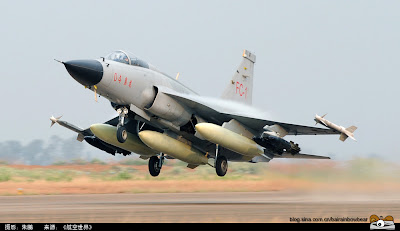 Pakistan has witnessed new defense acquisitions in this decade than any other, and in the center of it all is the new fighter which was designed by China with partial funding from Pakistan. It is formally known as JF-17 Thunder. When the fighter was in development, Pakistani online communities were jumping with excitement comparing it with its arch rival India’s modern combatants Su-30MKI, Mig-29S & Mirage-2000H. There were claims of it featuring western Radars and long range missiles, & Chinese ordering some due to its superior capabilities. But the reality is far from it.
Pakistan has witnessed new defense acquisitions in this decade than any other, and in the center of it all is the new fighter which was designed by China with partial funding from Pakistan. It is formally known as JF-17 Thunder. When the fighter was in development, Pakistani online communities were jumping with excitement comparing it with its arch rival India’s modern combatants Su-30MKI, Mig-29S & Mirage-2000H. There were claims of it featuring western Radars and long range missiles, & Chinese ordering some due to its superior capabilities. But the reality is far from it.China having spent significant amount of money into a fighter which it is never going to use, most probably forced Pakistan to accept its avionics to offset some its development costs. Chinese who are known for their self reliance first and quality next, are further downgrading JF-17s capabilities with their poorly copy-pirated avionics. Along with their dubious weapons, any chance of JF-17 maintaining BVR edge over its adversary’s front-line combatants, for the most part, is unlikely.
Even in close combat JF-17 lacks what it takes to win the fight. Its spine, & wings bearing resemblance(in wing twist & wing area) to a fighter which china knows inside out, the J-7, doesn’t have wing twist nor does it have enough area to provide a low wing loading. Its performance during low speeds and high alphas would be very dangerous for the pilot indeed. It has a Maximum G loading of only 8, as claimed by PAC. Its thrust to weight ratio is another negative point. When its arch rival, the Indian Air Force(IAF), was overtly critical of Tejas for having a low Thrust to Weight ratio, maybe they should have compared it with JF-17 which has even less, even with Emergency Thrust. Pakistan Aeronautical Complex(PAC) proudly displays the RD-93’s “Combat thrust with afterburner” as 19,200lbf, while the whole defense community knows RD-93’s thrust is 18,300lbf and the only real thrust increase was achieved with its new re-designed Sea Wasp RD-33MK engines- which has been explicitly stated by Klimov. However, Klimov’s RD-33 series 3(or series 2?), whose avatar is RD-93 with re-positioned Gear boxes, has a provision for emergency thrust which Klimov says can produce 8700kgf(~19200lbf) in their officially released document. They further state that as “Take-off emergency mode”. So the mentioned thrust can only be used during take-off where the Air is denser, and also only during emergency situations since it would seriously lower the engine’s lifespan. This is a far cry from PAC's “Combat thrust” claim. Why this is being stated is because, the engines(bought by the Chinese after pressurizing the Russians) are the only non-Chinese & non-Pakistani component, and even there they have lied about its capabilities. Hence the true, lower than published, specifications of Chinese and Pakistani components are open to any one’s guesses. In any case, the close combat capabilities of JF-17 is below average or average at best.
The next Achilles heal is JF-17’s speed. For a good interception, speed is an important criteria. However JF-17’s max speed is Mach 1.6 which is claimed by PAC. This indicates that JF-17 is draggier. When compared, their F-7s(Reverse engineered Mig-21s) have higher speed of mach 2+ with a lower thrust engine. The IAF fighters which it is going to face, all have speeds greater than the Thunder.
So why is Pakistan still inducting more and more of this fighter, which its critics increasingly call it Junk Fighter – 17 ? The answer may lie with Pakistan’s recent trauma & its psyche. Having sanctioned by the U.S, the star of their airforce, the F-16s were severally hit by lack of spares and most of the time grounded. The other 2 sources to procure modern Aircraft- Russia, have been sealed off due to the legacy of Soviet era friendship, current market in India & India’s pressure- and the other source, the European Union, for their extremely high costs. The third source, the Chinese, at that time were still flying their reverse engineered Mig-21s. In those circumstances, “Never again” was the motto of PAF and it instantly jumped into the project of further reversing the reverse engineered Mig-21, known as Super-7(a.k.a Super F-7) to obtain self reliance. The result of that project is the JF-17. So the decision was appropriate at that time, in those situations. However now with China having developed the J-10, and going by the recent reports of offering ToT(Transfer of Technology) to Pakistan, one wonders why are the Pakistanis still ordering 250 planes. Is the trauma of F-16 sanctions so high that they don’t even trust the Chinese? This can't be the case because they still need the Chinese to procure the RD-93 engines for them, even after the Chinese transfer all their associated JF-17 tech to PAC. So why...? The answer lies with their ego/psyche rather than the trauma. Unlike J-10, Pakistan shares copyright to JF-17 and that, for some weird reason, gives them something to celebrate about. This is strange for the reason, war machines are for fighting wars and achieving tactical & strategic objectives, not for gloating about who holds the copyrights. When JF-17 comes face to face with MKI or SMT, there won’t be much to celebrate about it, or the few millions if at all it earns though exports. In the end, it’s all about defending ones homeland from the enemy, and not copyrights.
Subscribe to: Posts (Atom)







